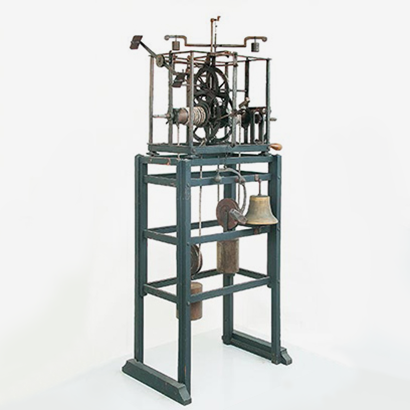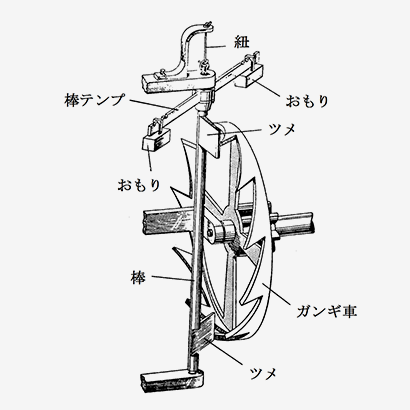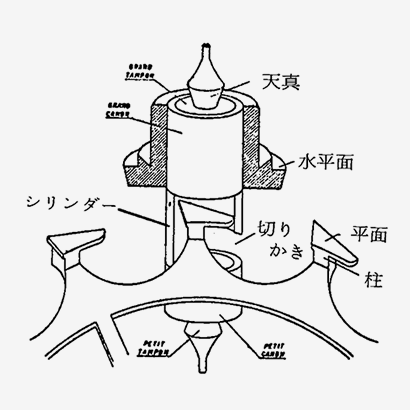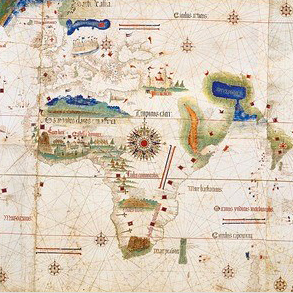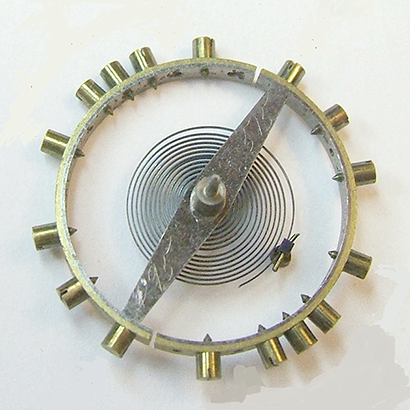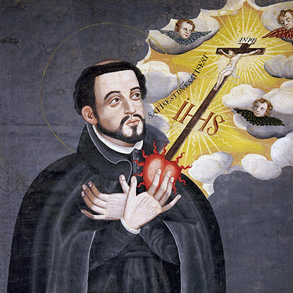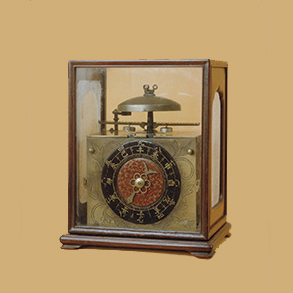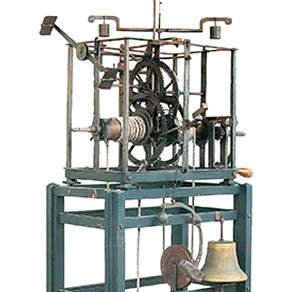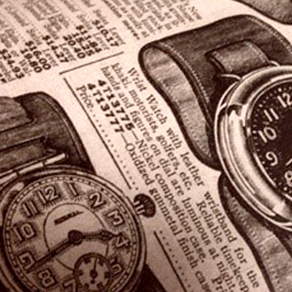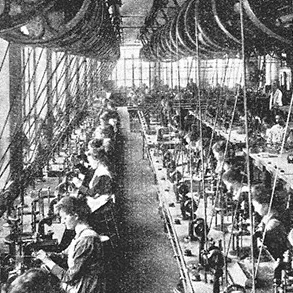Portable clocks
Although in our day it is hard to imagine a world without portable timepieces, the earliest clocks had to be built so large that they could not even be moved, let alone carried about.
The first mechanical clocks were driven by weights. A weight connected to the end of a cord would be wound up, and the force generated from the descent of the weight would be used to drive the clock. This mechanism, however, required some height. This is why the first mechanical clocks were installed on the roofs of tall buildings or at the tops of towers. A movable clock was unimaginable.
With these clocks being so large and heavy, the only way to develop moveable or portable timepieces would be to devise some form of driving force that could replace weights.
The emergence of movable clocks through the invention of the mainspring and size reduction
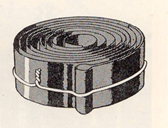
The invention that replaced weights as a driving force was the mainspring. Compared to a weight, a mainspring was much smaller and not so easily affected by movement or tilting of the clock.The invention that replaced weights as a driving force was the mainspring. Compared to a weight, a mainspring was much smaller and not so easily affected by movement or tilting of the clock.
Still too large to fit into pockets, early portable clocks were worn as pendants hung around the neck at about chest height, for which they were called “neck watches” in Germany and “chest watches” in Italy and France.
Still too large to fit into pockets, early portable clocks were worn as pendants hung around the neck at about chest height, for which they were called “neck watches” in Germany and “chest watches” in Italy and France.
Early portable clocks
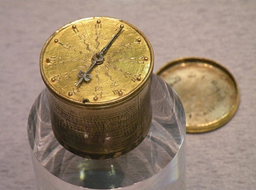
For a long time, it was thought that the first person to build a portable timepiece was the German clockmaker Peter Henlein. Henlein was a mechanical engineer born in Nuremberg (Nürnberg) in southern Germany.
The evidence for Henlein being the inventor of the potable clock comes from a book written in 1512 (Johannes Cochläus: Brevis Germaniae Descriptio), in which it is written “Henlein made a cylindrical portable clock in 1510 and the clock operated for 40 hours.”
The evidence for Henlein being the inventor of the potable clock comes from a book written in 1512 (Johannes Cochläus: Brevis Germaniae Descriptio), in which it is written “Henlein made a cylindrical portable clock in 1510 and the clock operated for 40 hours.”
The results obtained in December of 2014 showed that “Henlein’s clock” had been altered in various ways and refurbished with new parts after Henlein died, and that there was no evidence that the clock operated properly or even worked at all. It was therefore concluded that this was not in fact the world’s oldest portable clock.
It is now considered possible that a clock formerly owned by the Lutheran reformer Philipp Melanchthon may be the oldest portable clock, as this clock has hardly been altered at all since it was built in 1530.
Around this time, the city of Nuremberg bought many clocks from Henlein and sent them to various people as gifts. This clock may well be one of them.
Apart from the eight clocks investigated by the museum, there is said to be another clock made in 1505 and engraved with the initials PH kept in a personal collection. Its existence and mechanism, however, are unconfirmed.
And so the truth about the world’s first portable clock remains unknown, and both research and debate on the issue continue to this day.
The Nuremberg clocks that gained popularity in Europe

The “Nuremberg eggs” were early portable clocks that became popular throughout Europe.
These clocks were mainly produced in Nuremberg and are often considered to be the works of Henlein. However, compelling evidence suggests they were not made by Henlein, as the oldest “egg” confirmed to date was produced in 1550, some years after his death.
From that time, portable clocks evolved in step with technological developments.The earliest regulators were easily affected by vibrations when moved, reducing their accuracy, but in 1675 the Dutch inventor Christiaan Huygens devised a regulator with a spring fitted into a ring (a balance wheel), which was less susceptible to shaking and vibrations
.The use of a balance wheel made it possible to develop pocket watches around the middle of the 18th century and became widespread in and after the Industrial Revolution.
As a result of the development of a new escapement in the early 20th century, watches became even smaller, and through the event of World War I, wristwatches became widespread.
References
Germanisches Nationalmuseum website
Article from German paper Die Welt, December 2, 2014
Wikipedia: Peter Henlein, Nürnberger Ei, Torsionspendel


